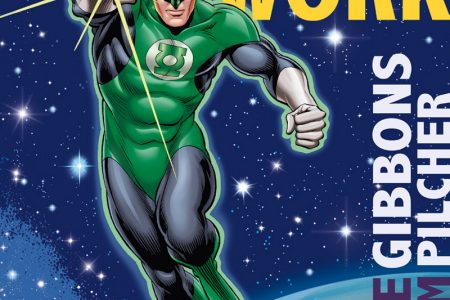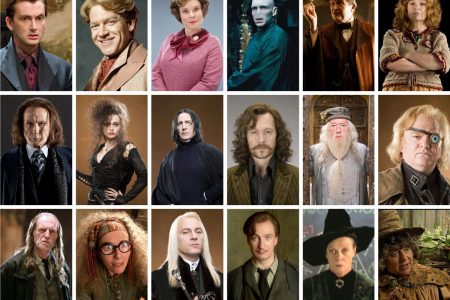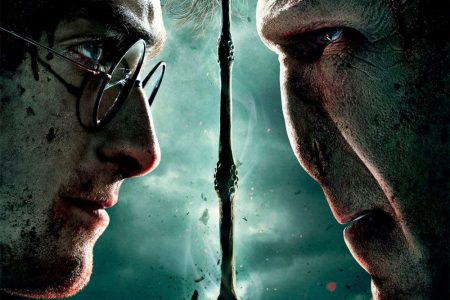Written by Jody Revenson
Published by Titan Books
RRP £24.99
If you’re a fan of Harry Potter, there is no such thing as enough information about the world of Harry Potter. This book is made with love and care for fans of JK Rowling’s creation, and it is a treasure trove of beautiful photographs, concept art and lovely details from behind the scenes that infuse appreciation for the amount of hard work that went into the making of the films. You need to have this handsome book on your shelves if you are into Harry Potter (which includes me, as can be evidenced by the Harry Potter category on this blog).
The book is separated into nine chapters to cover all the major characters in the films: Hogwarts students (not all of them, obviously); Hogwarts staff; student robes/sportswear; the Triwizard Tournament; celebrations (Yule Ball/Slughorn’s Christmas party); the Order of the Phoenix; Dark Forces; Ministry of Magic; and families. This provides a handy method of splitting up the characters into themed collections, but also acts as a more enjoyable way to consume the book in one sitting (something which I did because I couldn’t stop reading it).
Each character gets roughly the same approach to what is provided (although the more prominent a character, the more information and pictures are needed): an inset photo of the actor in character; a full-length publicity shot of the actor in character (to get the full effect of the costume); character sketches of costume ideas; concept drawings before casting (these are provided by several artists; my favourite was Rob Bliss, especially his early concept art for Shacklebolt); behind-the-scenes photography (such as a photo with Ralph Fiennes before special effects removed his nose and altered the skin on his head); and perhaps a photo (and accompanying text) of the character’s wand.
The accompanying text essays the approach to the various characters, through conversations with the production designers and their approach to the costume in relation to the character, and conversations with the actors and how they approached the character in relation to the costume. This is particularly fascinating because not only does it demonstrate how much thought and work went into what, on the surface, seems like a simple process (clothes are clothes, right?) but also how the nature of the character reflects on the costume and how the clothes provide the actors with a way to play the character in addition to what is in the screenplay and the books. The sheer number of costumes, even for one character, and the amount of work that can go into a single costume worn for a single scene (such as the eight weeks to embellish Dumbledore’s robes with embroidered Celtic symbols) are staggering and this book shows that the people involved should get a lot more respect.
These sections of text provided lots of fascinating nuggets about the film and the actors involved: Daniel Radcliffe tried green contact lenses to hide his blue eyes (to be true to the books) but his eyes reacted so badly he couldn’t wear them and it was decided that the cinematic Harry Potter would have blue eyes; Matthew Lewis wore a fat suit for the part of Neville Longbottom in the early films; nobody told the Phelps twins which of the Weasley twins they were supposed to be playing when they sent them the scripts; Tom Felton wore a wig for Harry Potter and the Goblet of Fire because he was tired of dying his hair blond but realised it looked better and returned to dying it for the rest of the series; Emma Thompson illustrated her thoughts of how Trelawney should look and the production designer agreed with her ideas; the reason why Professor Flitwick changed appearance between films; the mechanics behind Moody’s prosthetic eye; Imelda Staunton asked that she be given a big bottom to play Delores Umbridge, so she was given padding that helped her develop the distinctive walk; Jason Isaacs changed the look of Lucius Malfoy from the pin-stripe suit and dark hair to the blond, ostentatious, walking-cane look that sums up the character so perfectly.
The main aspect of this book is the wealth of visual detail from the films in the book: costume continuity photos and reports, lush visual development artwork and concept art of scenes and characters before the filming, the gorgeous publicity photographs of the actors in costume, illustrations of the costumes based on the production designs, close-up photographs of the material used for costumes (displaying the details, such as the buttons at the bottom of Snapes’ trousers, involved in the clothing), even the photographs of the wands – all these details provide an extra richness to the film as well as insider knowledge that enhances your enjoyment of the films. If you’ve been to the Harry Potter Studio Tour, you will have seen all the production design in real life, but it’s lovely to have a permanent record of these beautiful visuals easy to hand whenever you want.
I hope it comes across that I really loved this book – it is a great piece of Harry Potter memorabilia and a handsome addition to the Harry Potter tomes. If I have one minor gripe is that the book is in American English, which means that it constantly refers to Harry Potter and the Sorcerer’s Stone instead of Harry Potter and the Philosopher’s Stone, in addition to American English spellings (which leads to a typo of ‘actualy’ instead of ‘actually’, as if somebody thought that there shouldn’t be any words with a ‘-lly’ spelling); it also refers to the film Goodbye, Mr. Chips as ‘Good-bye, Mr. Chips’. However, this doesn’t detract from the finished product – Harry Potter: The Character Vault is a great collection of over 200 pages (plus an insert with death masks, and two posters) of glorious Harry Potter visuals and information.
Disclosure: this book was provided for review purposes.




